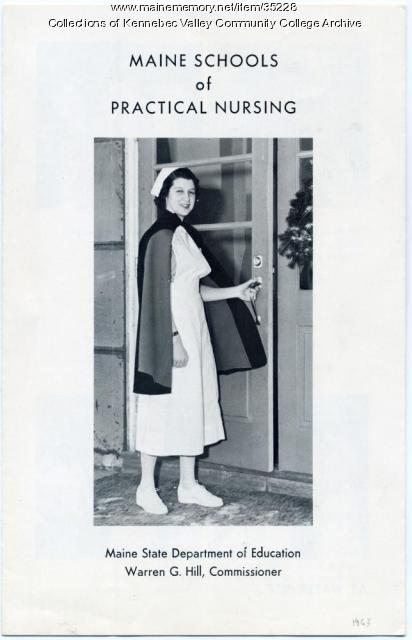Keywords: Intentions
Item 81169
Holman Melcher-Alice E. Hart marriage intentions, Portland, 1874
Contributed by: Maine Historical Society Date: 1874-05-19 Location: Portland Media: Ink on paper
Item 64618
Lt. John Sheahan on intent to escape, South Carolina, 1864
Contributed by: Maine Historical Society Date: 1864 Location: Columbia Media: Ink on paper
Exhibit
Dressing Up, Standing Out, Fitting In
Adorning oneself to look one's "best" has varied over time, gender, economic class, and by event. Adornments suggest one's sense of identity and one's intent to stand out or fit in.
Exhibit
George Henry Preble of Portland, nephew of Edward Preble who was known as the father of the U.S. Navy, temporarily lost his command during the Civil War when he was charged with failing to stop a Confederate ship from getting through the Union blockade at Mobile.
Site Page
John Martin: Expert Observer - Bangor High School, Abbott Square, 1865
"Martin wrote of the schools, "it was the intention to not be out done by any buildings in the State for convenience and comfort as well as elegance…"
Site Page
Thomaston: The Town that Went to Sea - Prison is Established - 1823
"… abodes of guilt and wretchedness.” It was his intent to reform criminals by “cutting off hope of relief during the term sentenced” in…"
Story
Sister Viola Lausier: Finance Director with a big heart
by Biddeford Cultural & Heritage Center
A life dedicated to applying financial and leadership expertise in the service of others.
Story
Nicole Morin-Scribner: living the dreams of her immigrant parent
by Biddeford Cultural & Heritage Center
A 6-year-old immigrant makes the most of her opportunities while staying connected to her roots
Lesson Plan
Longfellow Studies: The Birth of An American Hero in "Paul Revere's Ride"
Grade Level: 9-12
Content Area: English Language Arts, Social Studies
The period of American history just prior to the Civil War required a mythology that would celebrate the strength of the individual, while fostering a sense of Nationalism. Longfellow saw Nationalism as a driving force, particularly important during this period and set out in his poem, "Paul Revere's Ride" to arm the people with the necessary ideology to face the oncoming hardships. "Paul Revere's Ride" was perfectly suited for such an age and is responsible for embedding in the American consciousness a sense of the cultural identity that was born during this defining period in American History.
It is Longfellow's interpretation and not the actual event that became what Dana Gioia terms "a timeless emblem of American courage and independence."
Gioia credits the poem's perseverance to the ease of the poem's presentation and subject matter. "Paul Revere's Ride" takes a complicated historical incident embedded in the politics of Revolutionary America and retells it with narrative clarity, emotional power, and masterful pacing,"(2).
Although there have been several movements to debunk "Paul Revere's Ride," due to its lack of historical accuracy, the poem has remained very much alive in our national consciousness. Warren Harding, president during the fashionable reign of debunk criticism, perhaps said it best when he remarked, "An iconoclastic American said there never was a ride by Paul Revere. Somebody made the ride, and stirred the minutemen in the colonies to fight the battle of Lexington, which was the beginning of independence in the new Republic of America. I love the story of Paul Revere, whether he rode or not" (Fischer 337). Thus, "despite every well-intentioned effort to correct it historically, Revere's story is for all practical purposes the one Longfellow created for him," (Calhoun 261). It was what Paul Revere's Ride came to symbolize that was important, not the actual details of the ride itself.













